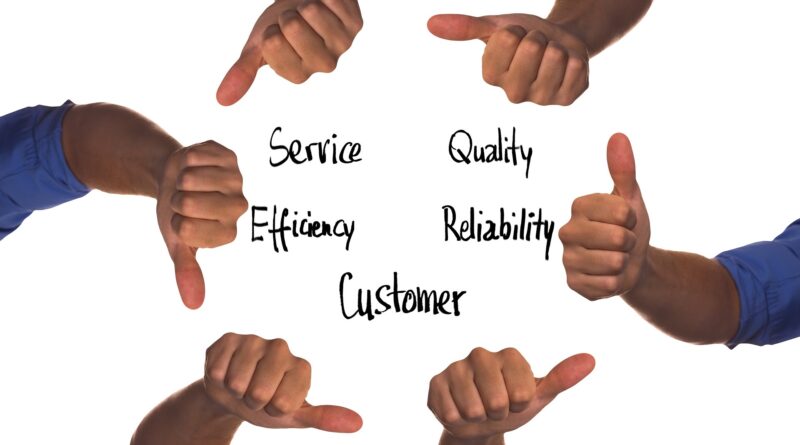7 Reasons Customer Engagement Matters
About 20% of new businesses fail during the first two years. While there are many reasons this happens, one reason is likely a lack of customer engagement.
Customer engagement is an ongoing, two-way dialogue between a brand and its audience. It involves creating mental connections between your company and your customers. This leads to more effective messaging about your brand and a potential increase in sales.
But the benefits go beyond just sales revenue. Strong customer engagement programs often result in happier employees, a better understanding of customers, and higher levels of advocacy. Let’s look at seven reasons why customer engagement matters.
1. Customer Retention

Engaged customers are more likely to remain active customers. Customer retention is about keeping your existing clientele happy. When they’re satisfied with you, they’ll keep coming back for more.
The more often someone uses your product or service, the higher their lifetime value becomes as well. This means each customer gives you more profit potential.
2. Customer Experience

Customer engagement is about more than just asking your customers what they want and acting on that feedback. It’s about having a meaningful dialogue with them, building a relationship, and creating an experience they enjoy so much that they’ll come back for more.
When you engage with your customers in this way, it allows you to improve the customer experience across every touchpoint in their journey—from initial contact through purchase to post-sale support. If you notice customers responding well to a social media post about a new product, for example, use that insight to tailor your messaging and improve the next campaign. If customers respond well to a live chat with an employee who has a specific skill set, consider hiring more employees like this one.
3. Customer Loyalty

The more your company interacts with customers, the more likely they will be to stick around through a company scandal, economic downturns, and so on. Customer loyalty can help keep your business running smoothly in tough times.
Achieving customer loyalty is not just about word-of-mouth marketing or advertising campaigns. It requires building relationships with your customers through regular contact with them.
This process involves a lot of trial and error. You might think having a formal tone in your communications is best, but it can come across as aloof or impersonal. You might think creating a more informal tone will help you connect with customers, but that can lead to misunderstandings in your messaging.
Experimentation will help you determine what appeals most to your target audience.
4. A Better Understanding
Having a better understanding of your customers can help you create a more effective loyalty program. By knowing what motivates your customers and what they value, you can tailor your loyalty program to meet those needs.
Loyalty programs are a great way to motivate your customers to spend money with you. You can offer loyal customers a free product or service for their repeated business. But the free gift has to be something your customers actually want.
Through customer engagement and experimentation, you can determine what your customers value most and tailor your loyalty program accordingly. This loyalty marketing program uses technology to track customer behavior and preferences to gain insight. Take notes from their strategy and implement a loyalty program that gives customers what they want.
5. Advocacy
If you’ve ever witnessed a friend go gaga over a product or service, you know how powerful advocacy can be. Whether they’re raving about a new food truck or sharing their thoughts on a new movie, recommendations from friends and family carry a lot of weight for consumers.
This is why customer engagement is so important. It allows your brand to build relationships with customers that may turn into advocates for the brand.
Customers who are engaged have an emotional attachment to their favorite brands. They’ll be more likely than others to share positive experiences. This could lead to brand new customers later on.
6. Feedback

You can use customer reviews and feedback to identify new markets, products, and services that are attractive to customers. In addition, you can use social media posts or surveys to understand what types of information your customers are interested in receiving from you.
As an example, if most of your customers seem interested in learning about how they can save time when shopping online at one of your stores, it may be a good idea for you to create an e-mail marketing campaign focused on this topic!
7. Upselling
Let’s say you own a pet boutique and have a loyalty program in place. When someone reaches 50 points, the system automatically sends them an e-mail offering to help them find additional products they might like based on their past purchases. The customer can then browse a few items and buy the ones they like the most.
This is an example of how customer engagement can upsell your customers. The customer is already engaged via the loyalty program. They know the brand and are familiar with its offerings.
You just need to give them an additional reason to buy more from you.
Boost Customer Engagement
Customer engagement is a key part of business growth. It can be a powerful tool for connecting with your customers and building relationships that lead to increased sales. But the real power of customer engagement comes from understanding who your customers are and then using that information to improve the customer experience.
And if you want to set your business up for long-term success, reading our business section is a must. Explore more of our articles for tips on improving your company.



